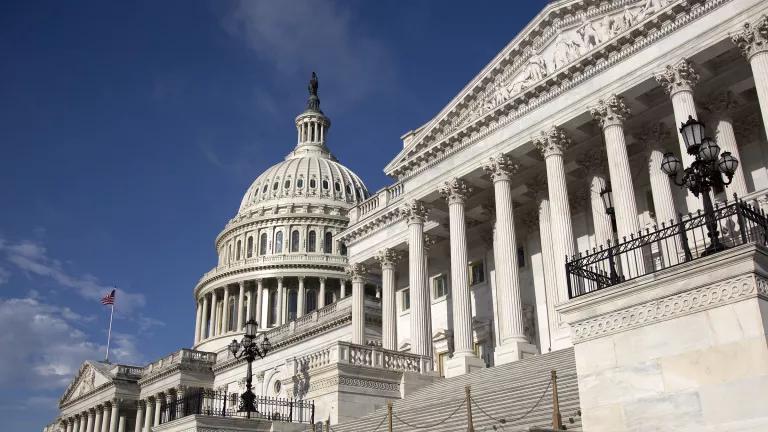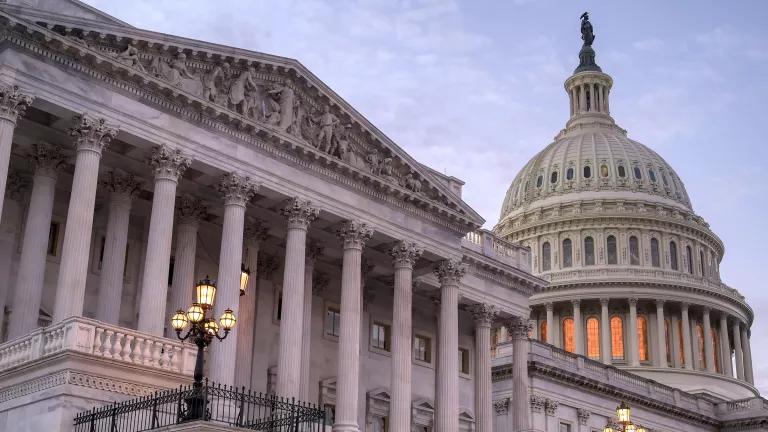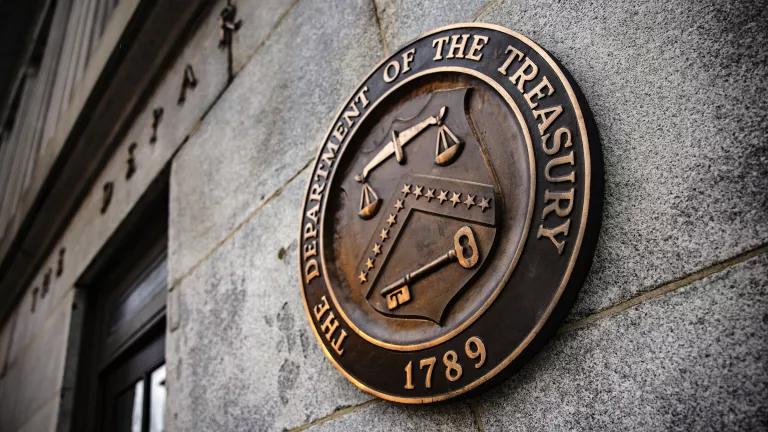Worker Health on the Front Lines of the Climate Crisis
COVID-19 is just the latest threat to essential workers, many of whom are dealing with another public health crisis: climate change.
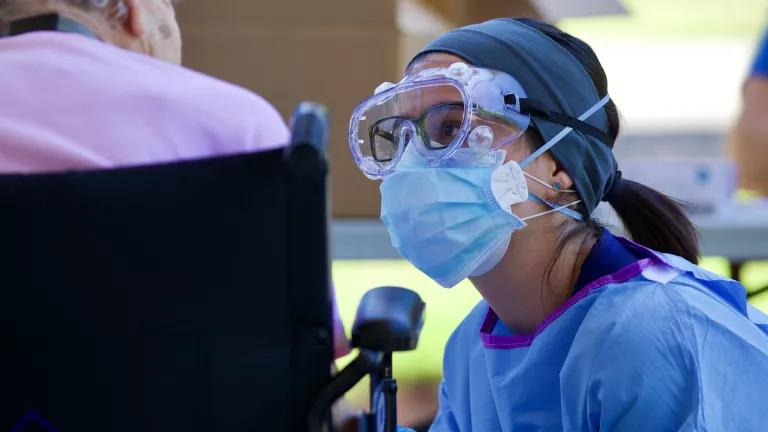
Nurse with the Florida Department of Health, May 2020.
The COVID-19 pandemic thrust worker health and safety into the spotlight, and for good reason. Insufficient protective equipment, crowded housing supplied by employers to migrant workers, and keeping sick people on the job are just some of the ways government regulators and businesses have failed working people. But COVID-19 is just the latest threat to essential workers, many of whom are dealing with another public health crisis: Climate change. In our new report, On the Front Lines: Climate Change Threatens the Health of America’s Workers, we examine how essential workers are on the front lines of extreme heat and other health and safety hazards fueled by climate change.
Workplace health and safety breakdowns are hardly new. Despite substantial reductions in deaths, illnesses, and injuries over the last few decades, more than 2.8 million U.S. workers were hurt or sickened in 2018, and more than 5,200 were killed on the job. Although total fatalities on the job increased 2 percent from 2017 to 2018, the Bureau of Labor Statistics found the number increased by 6 percent among Latino workers, and 16 percent among Black workers.
However, climate change is making existing workplace hazards worse. Increasingly severe and frequent heat waves, droughts, storms, and wildfires threaten millions of essential workers, including farm and utility workers, nurses, and wildland firefighters. In addition, certain mosquito- and tick-borne diseases are emerging in new parts of the country, creating new workplace hazards.
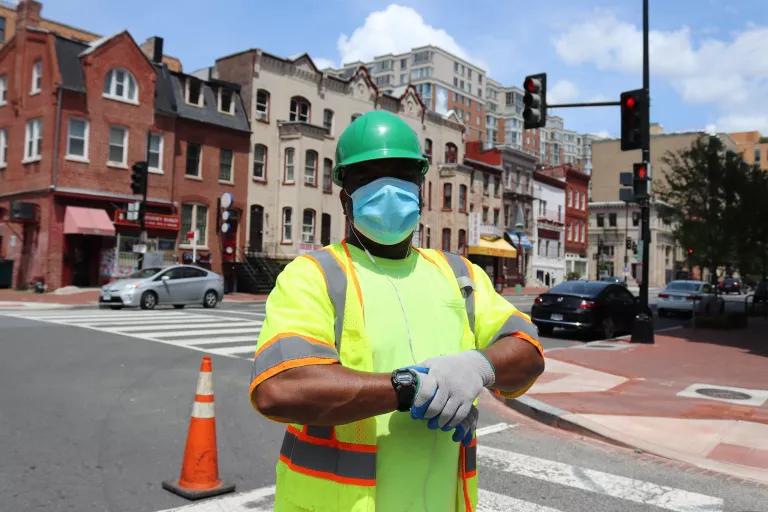
Utility worker in Washington, DC, June 2020.
Workers at meat and poultry processing facilities are one of the populations threatened by COVID-19 and climate change. They have been hit especially hard by the pandemic, partly because working elbow-to-elbow for entire shifts makes virus exposure much more likely. As of July 23, at least 37,197 U.S. meat and poultry workers have tested positive for COVID-19. An earlier look at nearly 10,000 of those workers infected by the virus found that 87 percent were Latino, Black, or Asian. Slaughterhouse employees already endure working conditions with unhealthy heat in the best of times. The threat of heat-related illnesses will only grow in this anomalously hot and humid summer as workers are forced to don heat-trapping masks and remove personal cooling fans from workstations to minimize circulating the coronavirus.
But don’t just take it from us. In addition to a comprehensive review of the latest science, our report includes personal accounts of more than a dozen union members working on the front lines of climate change in essential jobs. The workers profiled come from the Communication Workers of America (CWA), American Federation of Teachers (AFT), and Service Employees International Union (SEIU), which together represent an estimated 4.4 million workers across a broad range of industries and occupations. It’s heartbreaking to hear their stories of coworkers suffering from heat stroke, nosebleeds from toxic wildfire ash, and lost wages due to hurricanes.

Orlando Green, a school bus owner/operator in Louisiana, told us that increasing heat is making his job “a lot harder.”
These workers aren’t lying down without a fight, however. As Michelle Boyle, a nurse in Pittsburgh, said:
“I’m committed to conquering our climate nightmare, because it’s the least I can do for my children.”
So, what can and should we do to better protect our essential workers during the dual crises of climate change and COVID-19?
Congress and the administration should:
- Ensure that health and safety laws address the realities of working in a climate- and pandemic-disrupted world, and that enforcement funding and staffing are up to the challenge of protecting workers. One of the most immediate needs is an enforceable safety standard to protect all workers from heat-related illnesses and deaths.
- Protect the legal rights of workers to engage in unionization and collective bargaining. Worker activism has surged since the start of the COVID-19 pandemic, but so have employer crackdowns on such activism.
- Build an integrated, climate-smart national system to track, analyze, and quickly act on existing and emerging health and safety threats to workers.
- Support research on how best to protect workers from climate change, such as effective mental health interventions before, during, and after climate-fueled disasters.
- Advance policies that dramatically reduce the pollution driving climate change and transition to a healthier clean energy economy.
Many of us take for granted the food on our tables, the lights and internet access in our homes, and the ability to get from point A to point B for work and play. None of these things happen without essential workers. To keep our economy and ourselves vibrant and healthy, we need to take care of the workers who take care of us—now, and into the future. That means making sure teachers, delivery drivers, janitors, hospital workers, and all the other folks who keep the country humming get the protections from COVID-19 and climate-related health harms that they need and deserve.


